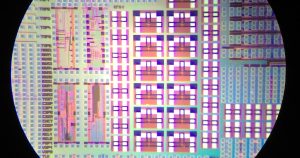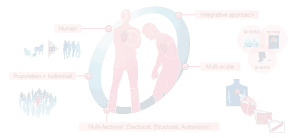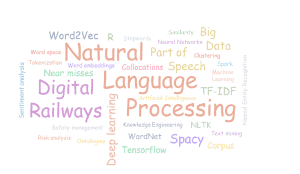The world of quantum physics is fascinating. It presents a description of nature that challenges our most rooted concepts about what reality is. For example, quantum objects have “mysterious” properties that allow them to be in multiple places and move in different directions simultaneously, or even exist and not exist at the same time. In other words, they live several parallel stories.
Making use of these parallel stories to perform calculations is what quantum computing is based on: a world in which information is processed using the laws of quantum physics. Today, quantum computers are subject to extensive experimental and theoretical research as it is believed that, in the future, they will be able to solve many of the current computational challenges. These are problems that not even the most sophisticated supercomputers available today, or even the day of tomorrow, will be able to solve.
For instance, it is believed that quantum computers will help us design new materials more efficiently, such as superconductors at room temperature that would allow us to reduce global energy consumption by reducing energy transfer losses. Equally, they could enable us to design new catalysts for the reduction of greenhouse gases and the efficient production of fertilizers. We could also carry out much faster searches in unstructured databases, which would be very useful in the era of Big Data as it would allow us to identify genetic diseases more accurately. They could even help us solve complex optimization problems that would facilitate the prediction of weather and the modeling of the financial markets. Finally, we could even use to them to decipher cryptographic codes that are indecipherable for today’s computers.
Quantum computers use a new type of information unit – the quantum bit or qubit – that can be in a superposition of binary states, 0 and 1, at the same time. Currently, in international research centers, there are small quantum computers with a few dozens of these qubits, which allow simple versions of these algorithms to be solved. Nevertheless, a supercomputer can also do these calculations without much effort. More recently, with a 53 qubit processor, researchers at the Google AI lab demonstrated that quantum computers can find a solution to a specific set of problems impossible to solve for regular ones. The possibilities to apply this algorithm to solve real world problems, however, are currently quite limited. This scenario becomes more interesting if 100 qubits were to be exceeded: this is when quantum computers would be able to start solving problems that supercomputers cannot. At thousands of qubits, they could radically change the society in which we live.
In the race to build this calculation machine, there are several obstacles. One of them is that, in current quantum computers, qubits are wired with cables in a similar fashion to the first conventional computers. Remember “The Bomb” by Alan Turing in the movie “Deciphering Enigma” or the Colossus computer that also helped the allies win World War II. Authentic computing beasts. At that time, each electronic component had to be wired one by one and. Since each component was connected to several, the number of connections grew exponentially generation after generation. At the time, this issue was known as the problem of the “tyranny of numbers”, coined in the 50s by the vice president of device development at Bell Labs, Jack Morton.
Due to this problem, it was not until the integrated circuit was invented – by Jack Kilby of Texas Instruments – that the computer market took off. The integrated circuit has allowed billions of electronic components to be placed on a chip the size of a fingertip without the need to wire them by hand one by one. In the world of quantum computers, however, we are currently facing the same problem. Currently, qubits are wired one by one, which works well for a small number of qubits. Nevertheless, as we begin to build more sophisticated quantum computers, this tactic will not be viable: we could call this phenomenon “The tyranny of quantum numbers”.
To tackle this issue, a research team consisting of members of the Hitachi Cambridge Laboratory, the University of Cambridge, University College London and CEA-Leti (France), and led by a member of SRUK, M. Fernando Gonzalez Zalba; have developed a circuit that combines qubits with analog and digital electronics in the same integrated circuit. This study, which was published in the June issue of the journal Nature Electronics [1], shows how it is possible to combine these different technologies on a single chip in such a way that it will not be necessary to wire each qubit one by one. This milestone will facilitate the manufacture of more sophisticated quantum computers which, eventually, could expand the capabilities of conventional computers. The chip is based on silicon technology, the same technology that is used in the production of chips for computers, mobiles, cars, etc; hence facilitating its usage by the microprocessor manufacturing industry and thus a faster large-scale production in the future.

One of the integrated silicon chips which was used to carry out the experiments. An optical microscope was used to capture this image.
* * *
By M. Fernando González Zalba, Head of Quantum Computing at the Hitachi Cambridge Laboratory, Hitachi Cambridge Laboratory, Hitachi Europe Ltd.
More information:






